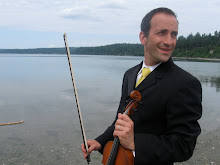Some of you may have received a number of announcements about Monday's all-school Michaelmas celebration, its joys, and the tight parking situation. For parent & child families who have not, I wanted to again extend an invitation to the festival while duly noting that it is best to arrive early, carpool, or plan to park at Ken's Corner (525 and Cultus Bay) and fetch a ride from there. It is my understanding that the school's Parent Council intends to create a sign or some other way for Whidbey Island Waldorf School families to gather in that parking lot if they seek a ride over to the school. Please do call me 341-4124 or the school 341-5686 if you plan to attend and remain confused. While the parking may present challenges and the dragon may be too intense or the play slightly too long for some of our very young children, I have heard that it is wonderful to have so many families gathering together to celebrate light and strength in face of the approaching darkness of winter.
There are brochures (enrollment forms) for next session, which begins October 30 & 31, outside the Butterfly Classroom in a red basket. Thank you for coming to this session, and I look forward to seeing you next session. It has been and continues to be a school policy that enrollment for Dewdrop and Rosebud classes is on a first-come, first-serve basis (that is, the school does not hold spaces in next session for families in the current session). Although I am new to this school and community and it seems we have room to grow in our classes, my experience in Baltimore was that enrollment in classes could increase throughout the school year; I recommend putting in an application soon. Contact me if you have questions.
The interaction of play and work in the Waldorf early childhood classroom is a rich one productive one. For many young children, play and work are often the same--witness the focus many of our children show when washing dishes or how eager so many are to shake the butter jars in class. This article by Joan Almon about the vital importance of play also shares insight into how our joyful and cooperative work as adults can inspire the independent and developing social play of our children. Joan Almon was a founding teacher at the Waldorf School of Baltimore and then the Acorn Hill Children's Center (right outside Washington, DC). She went on to become a teacher of teachers, a well-spoken lecturer, and to found the Alliance for Childhood, an organization that brings together educators, physicians, professors, researchers, and others interested in studying and preserving childhood. The Alliance benefits from Almon's experience in Waldorf education but also tries to go beyond Waldorf education to promote and preserve childhood for all children.
With warmth and light,
William Dolde
